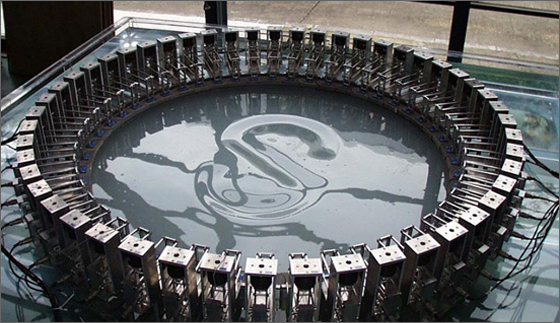Advertising has been on the beaches since forever, this is what we call a vacation (and since ad people never take a vacation we can't help advertising when we're supposed to). There's been Nissan Sand Castle ads, there's sand billboards that we wrote about years ago, and most recently in Cannes, S-W-H relaunched as Indie with a giant beach towel just last week. The sky is the limit - now there's even foam ads that can blow cloud logos all over.
But lets not stop there, Brandfreak has found a possible adspace in the surface of water -
Scientists at Japan's Akishima Laboratories have developed a technology that allows programmers to literally "write" messages on the surface of water. Its experimental device, which appeared stateside at the Museum of Modern Art last year, is called AMOEBA (Advanced Multiple Organized Experimental Basin). It's a cylindrical tub about 12 inches deep and a little over five feet in diameter. Fitted along the pool's rim are fifty trigger-type units equipped with plungers that agitate the water's surface. Programmed in unison, the plungers can create almost any configuration of ocean wave. (The device was originally developed to test hull performance on ship models.) But an enterprising student at the lab discovered that when the correct wave frequencies intersect, the water will also support messages.
Sci-fi movies have nothing on the real advertising future.

